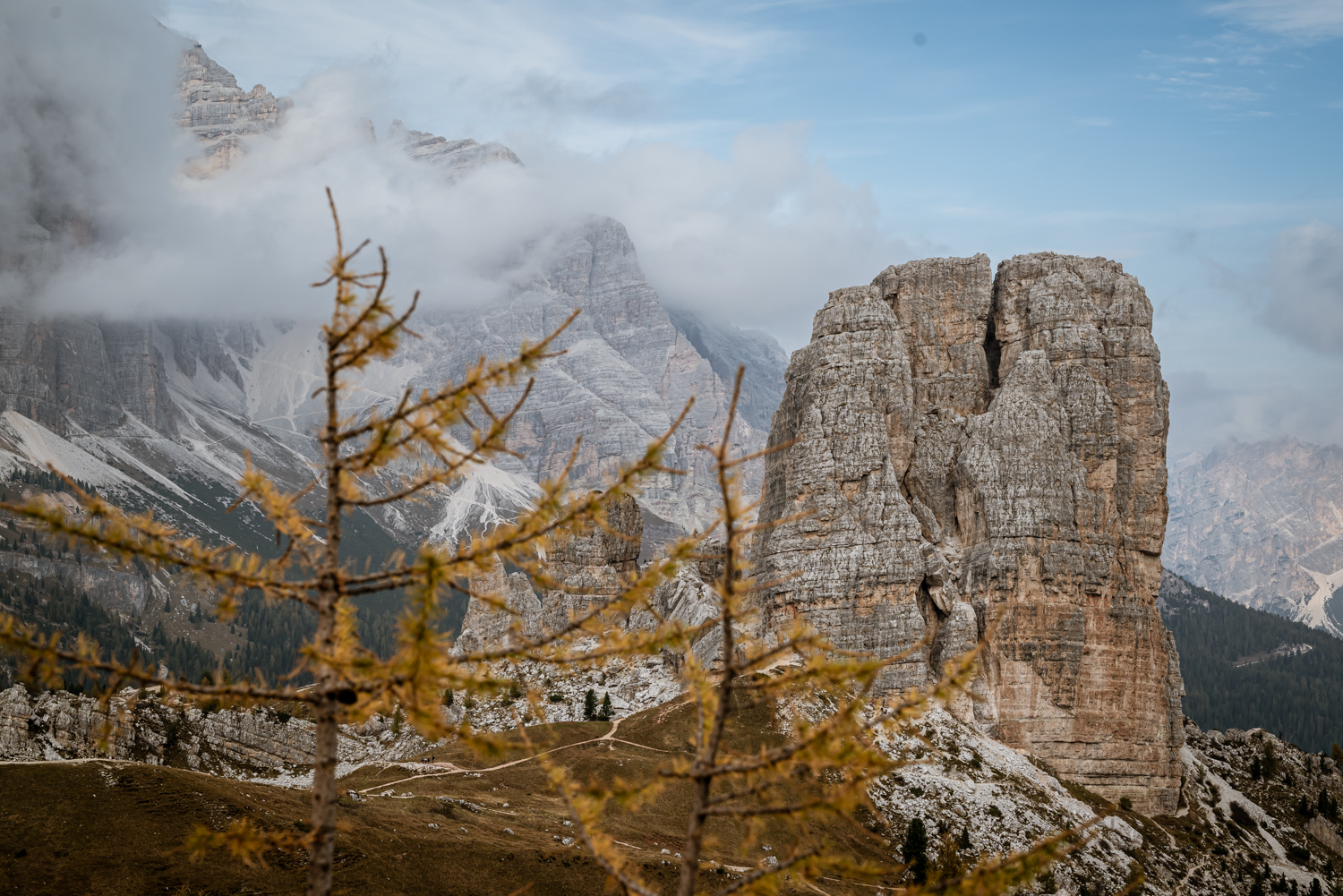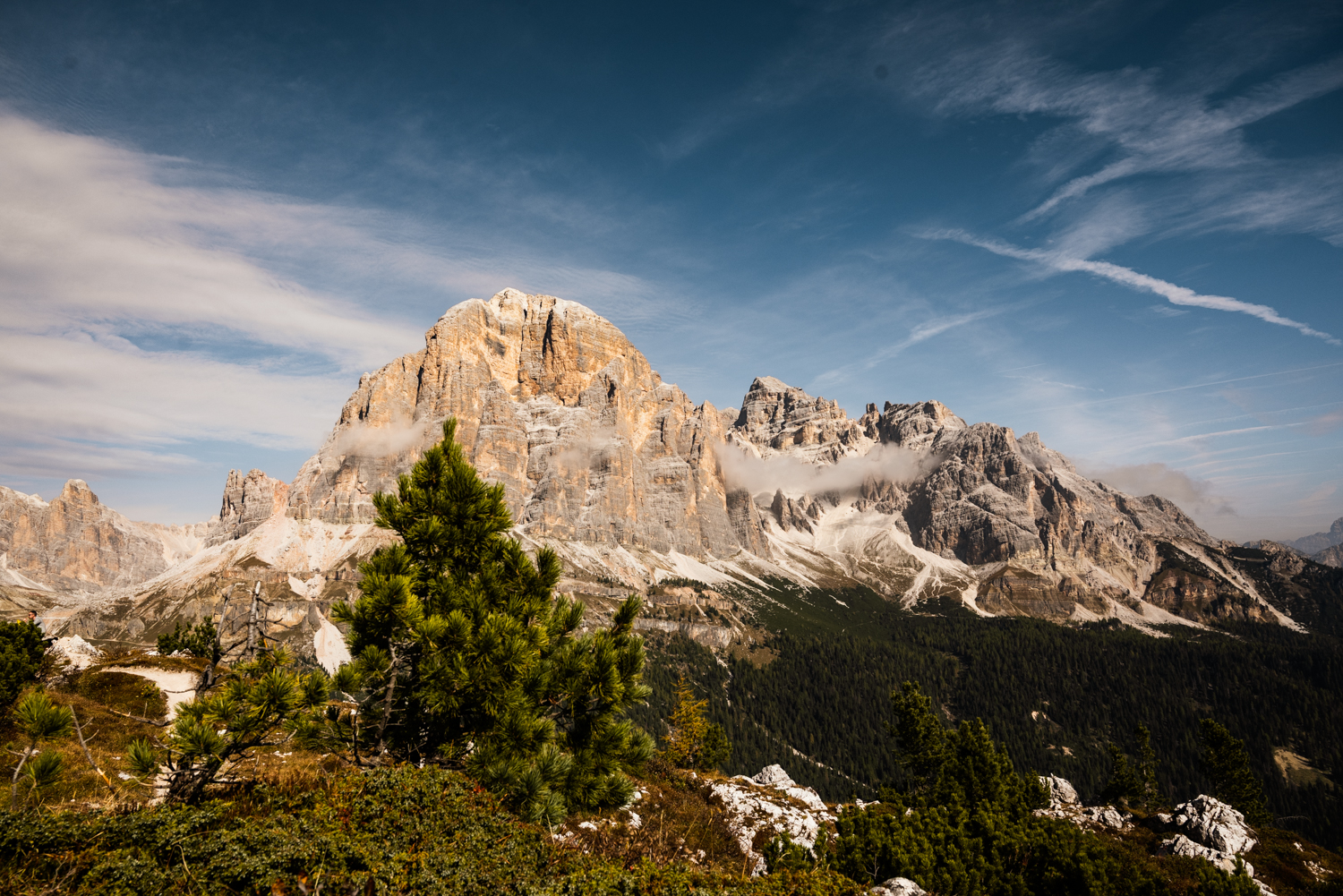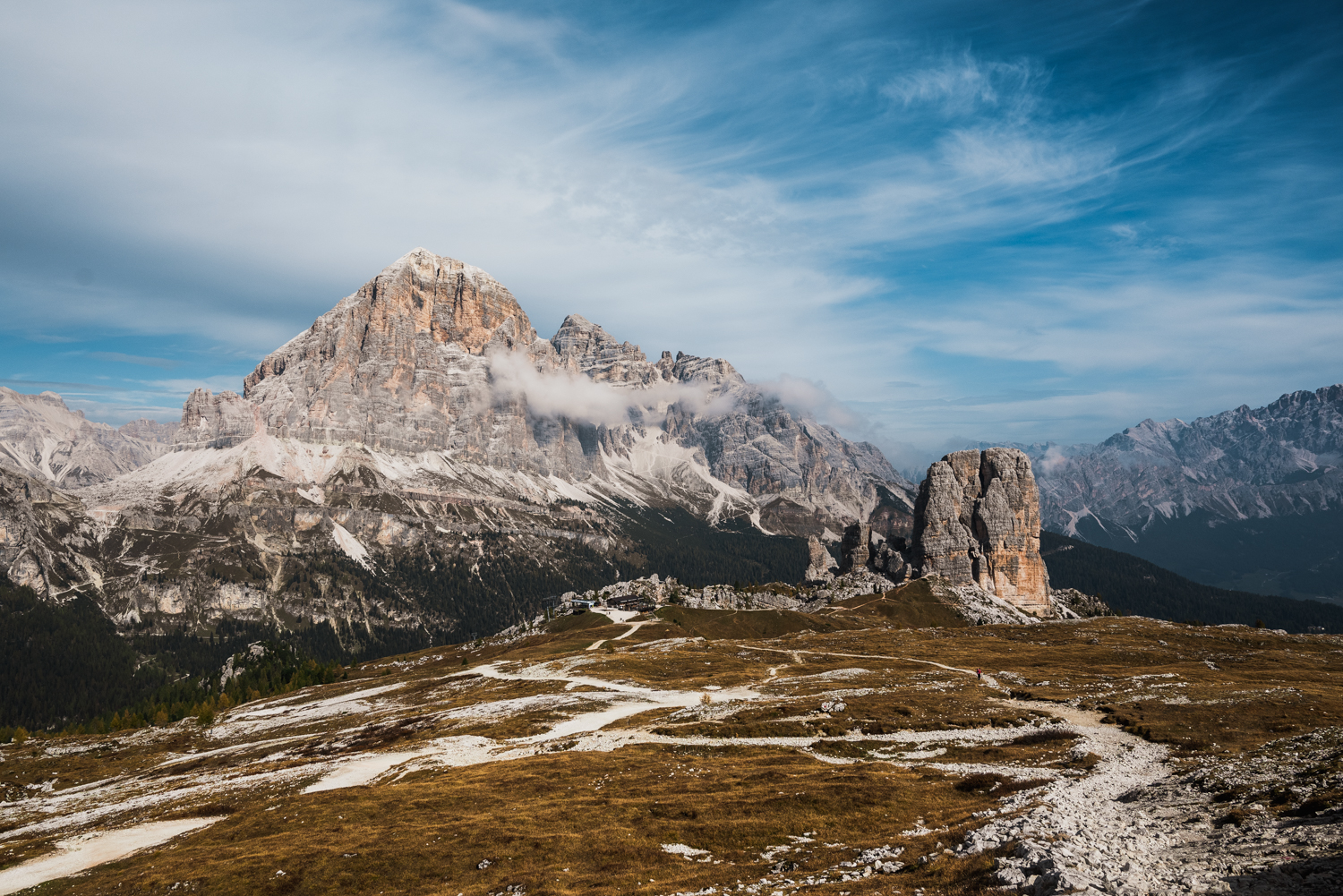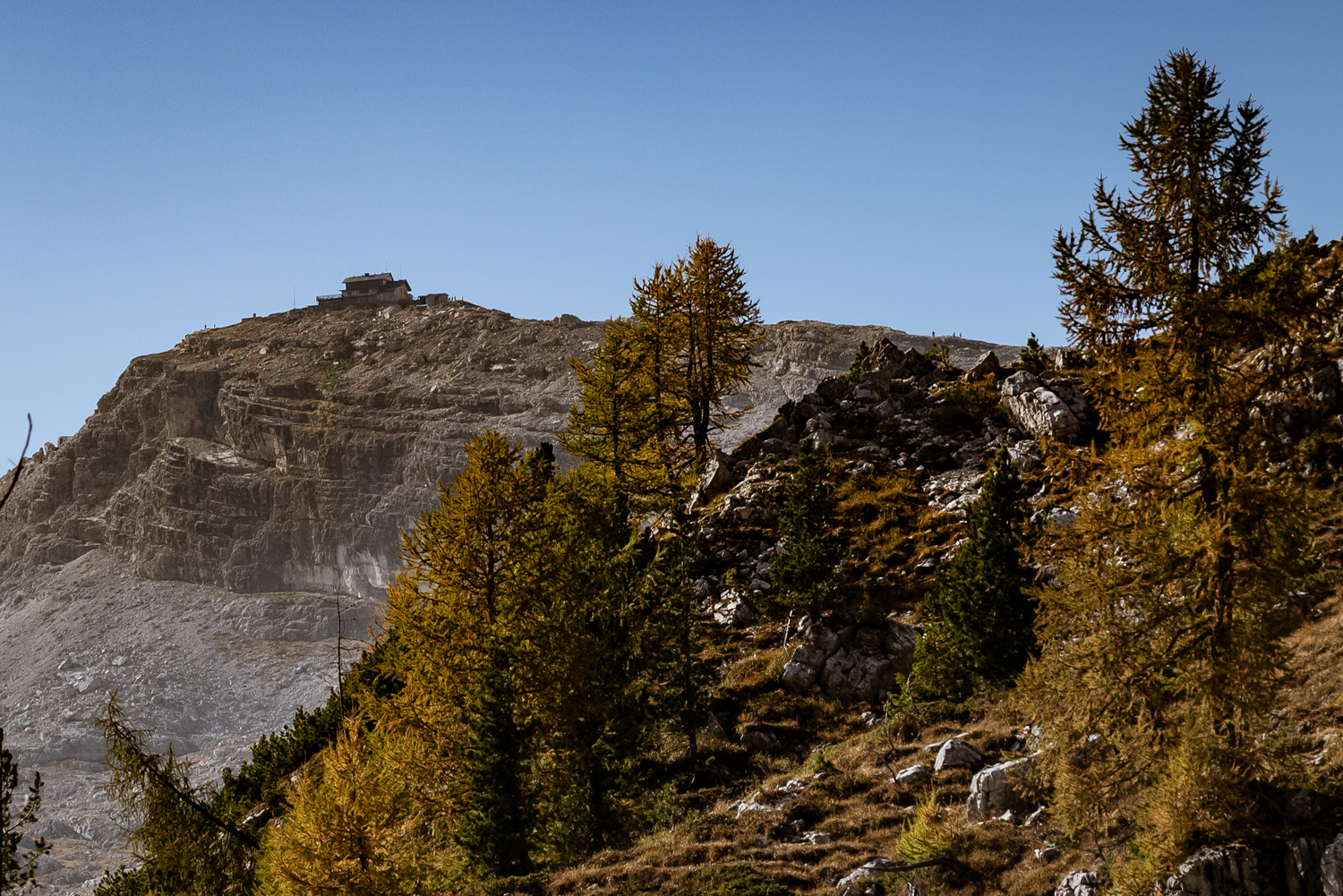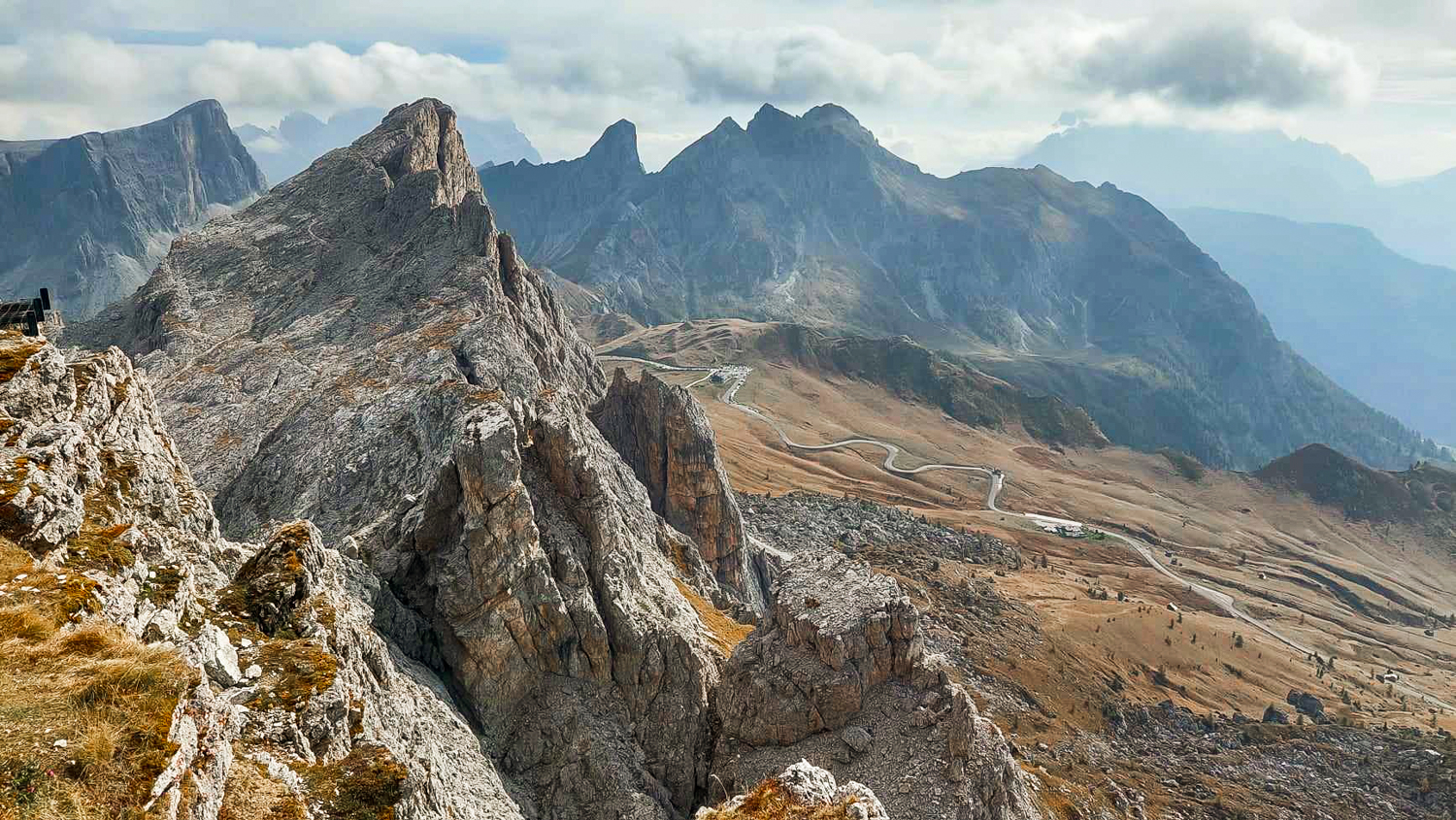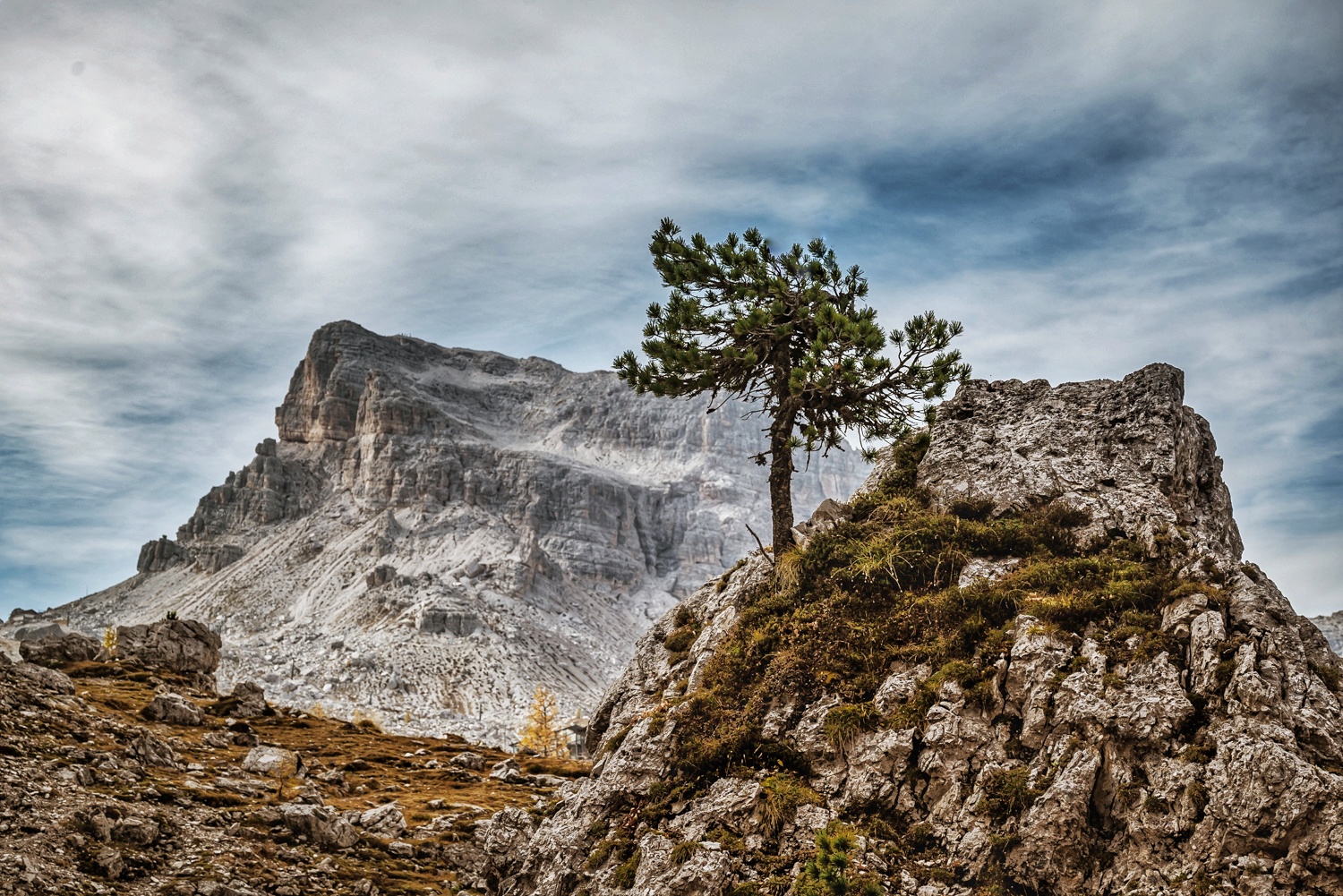
When Dolomite Dream Comes True
Have you ever been to the Dolomites 😍? For me, it was one of those fleeting adventures that stay with you for a lifetime. My first step into the Dolomites left me speechless. It felt as though I had entered a magical realm. A fairy tale where every view captures something spectacular and every moment feels timeless. The excitement was palpable, knowing this was the perfect spot for capturing beautiful photos. The mountainous landscapes, dramatically soaring to the skies, were like magnets for our cameras and souls.
This trip to the Dolomites was a magical endeavor 🥰. A profoundly treasured experience. I was in great company, with the sun kissing our cheeks and smiles reaching our ears. During this time of year, when days shorten, our adventure also becomes a race against time. But every minute counted. We aimed to capture the essence of the Dolomites through our lenses. To document that delicate dance of light and shadow, only nature can choreograph. And there, among the majestic peaks of Cinque Torri, we became hunters of real dreams, our eyes and cameras fixed on the mesmerizing sights we witnessed.
Imagine stepping straight into a fairy-tale land where every nook beckons to be captured through your lens. Every moment feels like it’s encapsulated in a magical bubble of eternity. My joy was so immense that it still reverberates in my dreams ☁️.
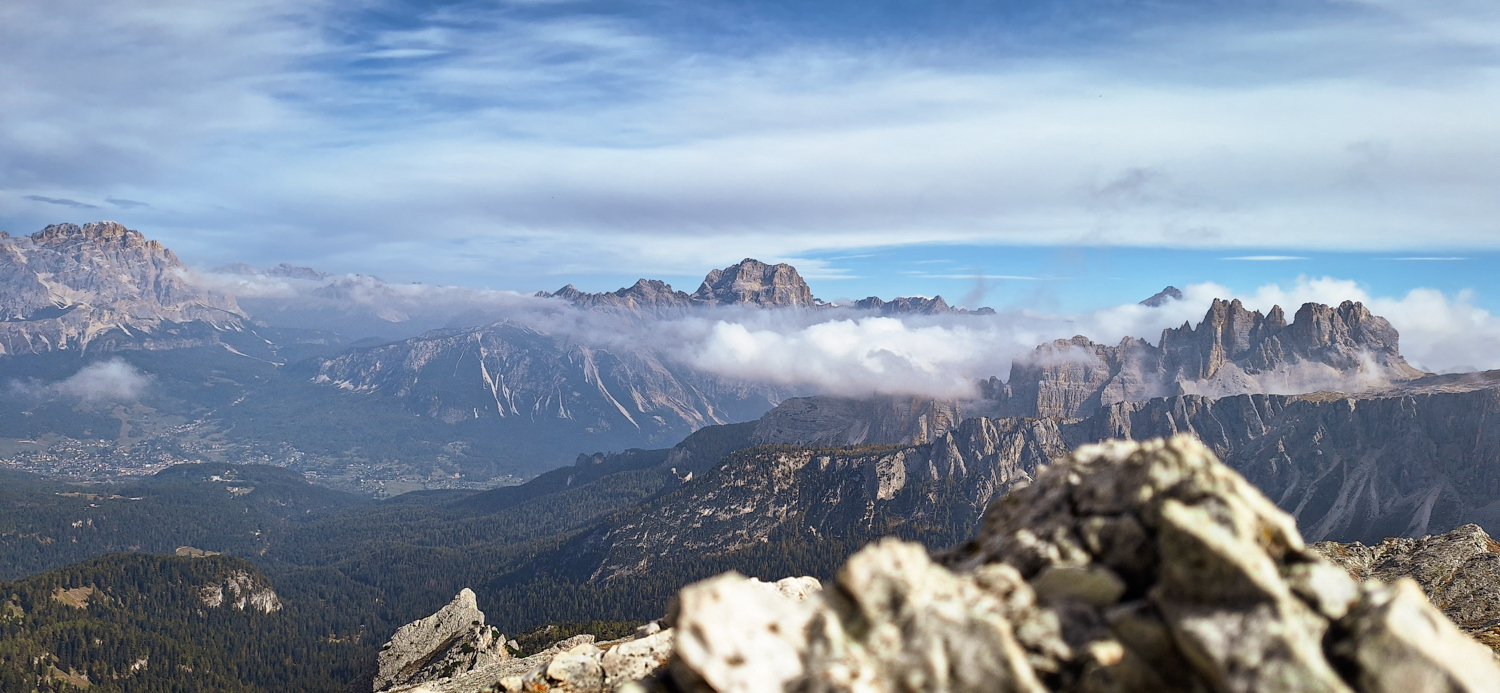
Photographing in the Dolomites:
From the underwater realm, where light dances in playful and unique ways, I transitioned to the heights, where the air grows thin and the sky feels closer. I traded my underwater photographs for a world entirely different, yet equally enchanting 😀. A fresh source of inspiration and passion for my photographic art.
Taking photos in the Dolomites is a truly unforgettable experience. This beautiful landscape offers a myriad of scenes, from towering mountain peaks to lush valleys. However, photographing in intense daylight, such as around noon, can pose challenges. Here are some tips for photographing in the Dolomites, including camera settings, handling harsh light, and choosing the right lens:
Camera Settings
Aperture: For landscape shots, it’s generally recommended to use a smaller aperture (higher f-stop number), like f/8 or f/11, to maintain sharpness across the scene.
Shutter Speed: Use a faster shutter speed to reduce the amount of incoming light in brightly lit conditions.
ISO: Stick to the lowest possible ISO to minimize noise; ISO 100 or 200 is often a good choice.
Handling Harsh Light
ND Filters: Neutral density (ND) filters help reduce the amount of light entering the lens, allowing control over aperture and shutter speed without overexposing.
Polarizing Filter: Useful for cutting glare and enhancing colors, especially in bright conditions.
Shoot in RAW: This format allows for more post-production flexibility in retrieving details from shadows and highlights.
Choosing a Lens
Wide-Angle Lenses: Highly recommended for landscape photography in the Dolomites Lenses like 24mm, 35mm, or a 16-35mm zoom can capture vast scenes while maintaining image quality.
Versatile Zoom: Consider a high-quality zoom lens like the 24-70mm f/2.8. This lens offers a range of focal lengths while keeping the image sharp.
Consider weight: You might spend a lot of time on hiking trails, so lighter lenses (e.g., f/4 instead of f/2.8) can be preferable.
Beyond these technical tips, timing is also important. Early mornings and late afternoons provide softer light and longer shadows, enhancing your photos. While challenging, even harsh midday light can yield dramatic effects with the right approach and technique.
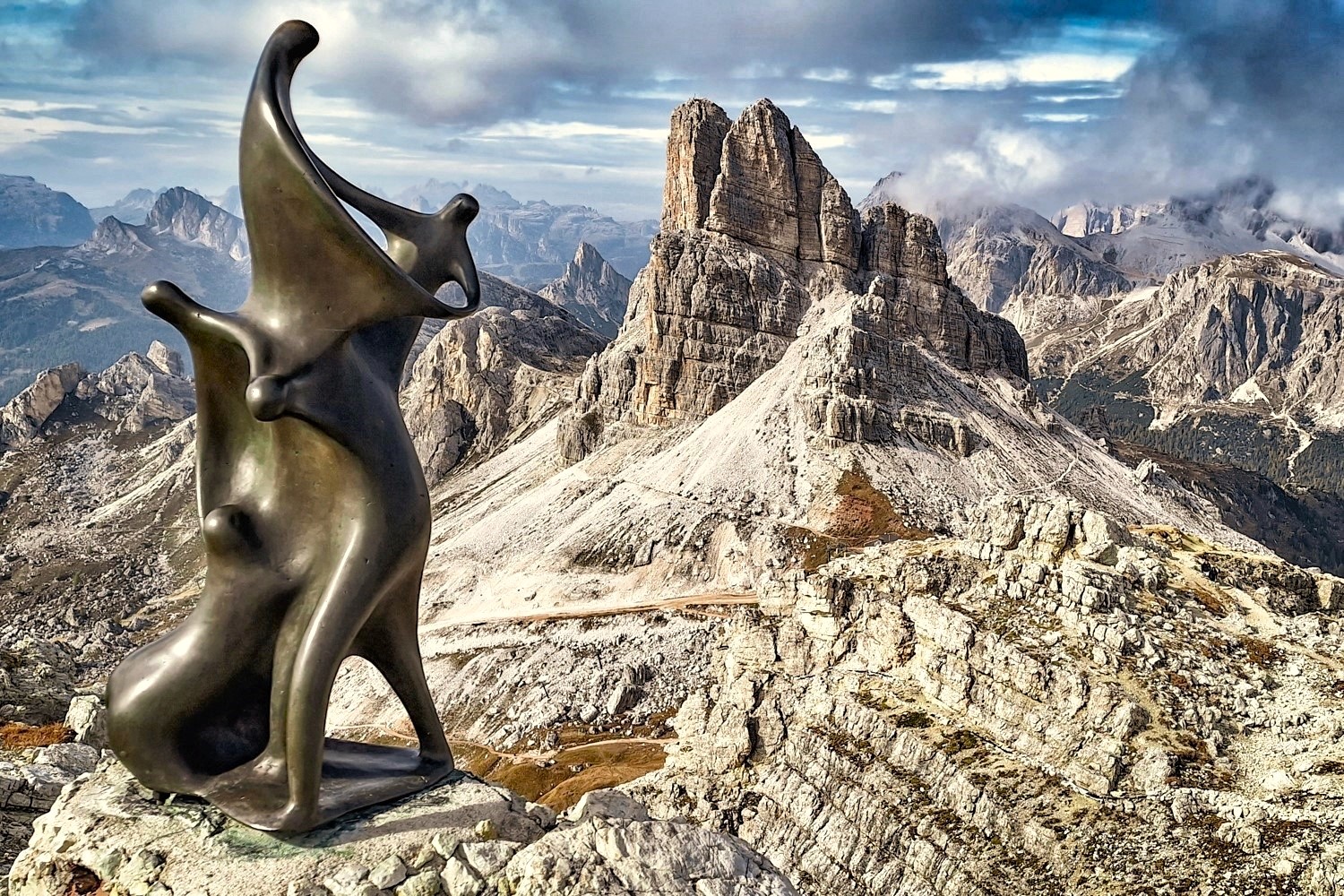
A Brief Description of the Dolomites
The Dolomites, part of the Northern Italian Alps, are a geological marvel, home to some of the world’s most impressive mountain formations. This UNESCO World Heritage site is known for its steep cliffs, deep valleys, and breathtaking vistas.
Especially appealing to photographers, the Dolomites offer unique geology and light interplay against the backdrop of magnificent mountains. Dawn and dusk in the Dolomites, often referred to as “Alpenglow,” are particularly magical times when the mountains are bathed in warm hues of pink, orange, and red, creating almost surreal scenes. Cinque Torri is no exception, with its imposing towers providing endless opportunities for capturing stunning landscapes, dramatic silhouettes, and vivid sky colors.
Also known as the Dolomitic Alps, what makes them special is their unique geological features and rock diversity. Dolomitic rocks typically have a pale color, often white to gray, with a crystalline structure. Different from regular limestone due to its higher magnesium content, this gives the dolomite certain properties, like greater resistance to weathering and distinct erosion patterns. All of this has led to the spectacular rock formations characteristic of the Dolomites.
The rocks in the Dolomites not only shape the stunning landscape we see today but also narrate a complex tale of a long and dynamic geological history.
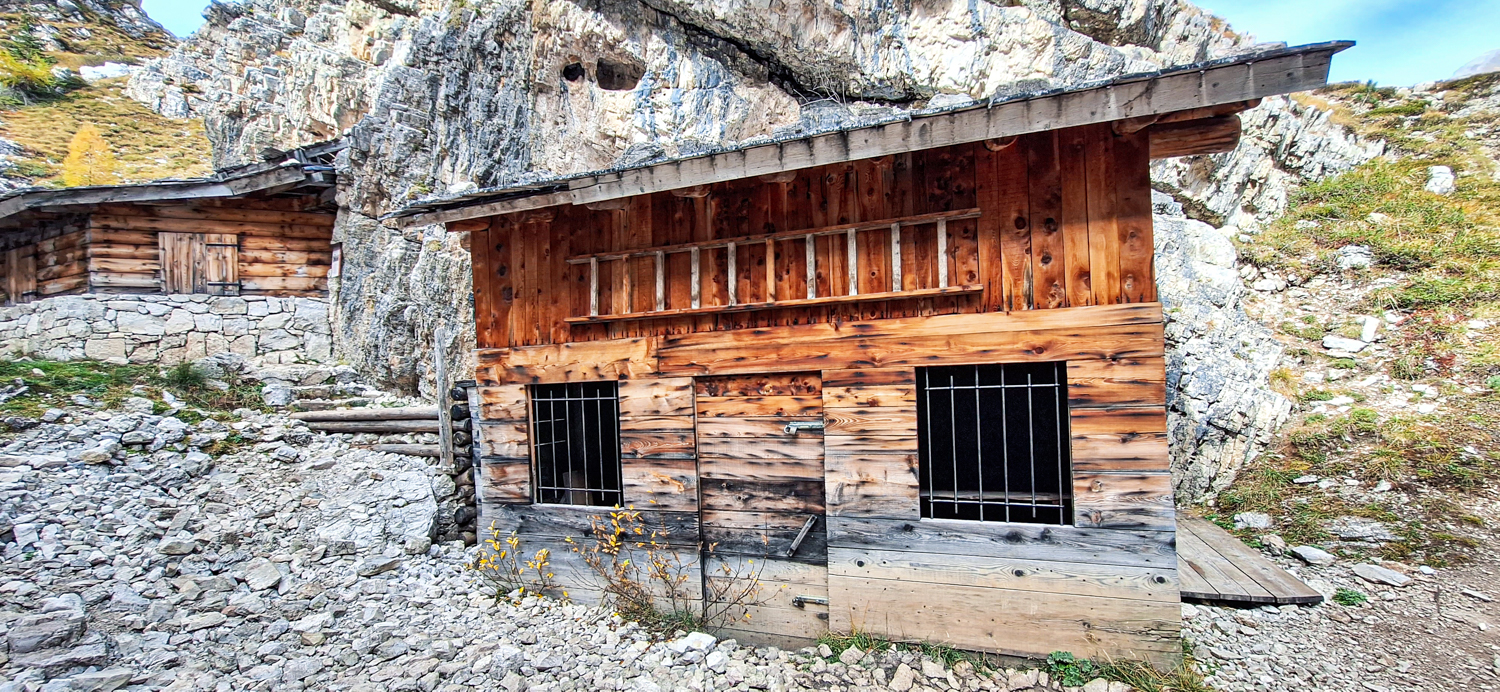

Cinque Torri
The defining features of Cinque Torri are primarily its five magnificent rock towers that stretch high into the sky, offering one of the most spectacular views in the region. The area is rich in history, having been a battleground during World War I, as evidenced by numerous preserved military fortifications and open-air museums. The summer hiking trails around Cinque Torri are extremely popular among nature lovers and active holiday seekers. The trails vary in difficulty, ensuring that every visitor finds something suitable, regardless of their experience or physical fitness. In addition to classic hiking paths, the area also offers numerous climbing opportunities for those seeking more adrenaline and challenge.
Not only is the region visually enchanting, but the constantly changing weather conditions and seasonal shifts offer boundless possibilities for creativity and diversity in photography. Every visit to the Dolomites offers a unique experience, making these majestic mountains and Cinque Torri an endless source of inspiration for photographers worldwide.
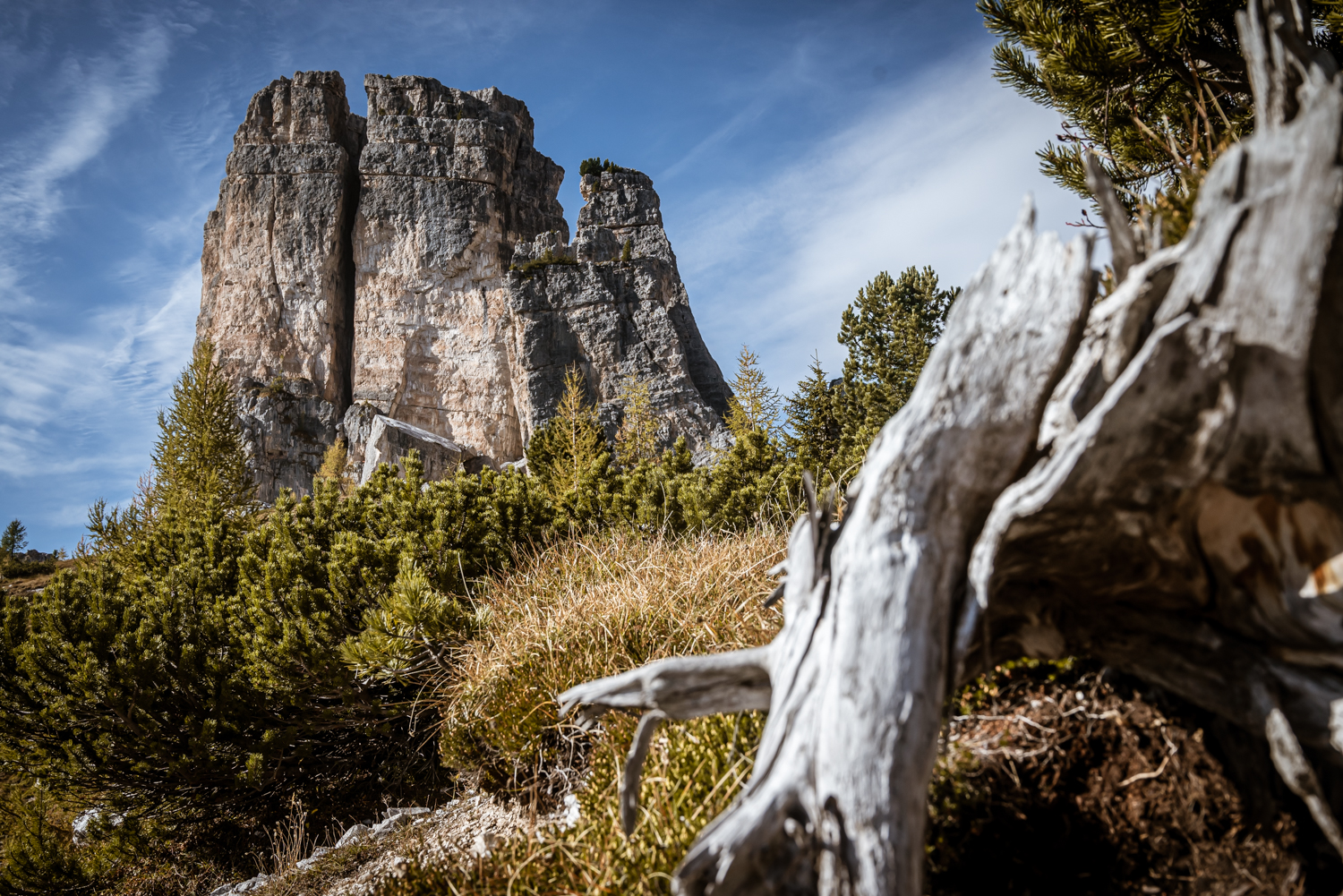
How to Get to the Dolomites from Slovenia
Traveling from Slovenia to the Dolomites in Italy is a journey filled with scenic beauty and alpine wonder. By car, train, or bus, one can easily access this breathtaking mountain range, witnessing the blend of two cultures along the way.
Of course, the best way is to explore the Dolomites independently, allowing for free exploration without time constraints. However, there’s always the option to choose an organized tour. Many providers, including in Slovenia, offer guided tours to this breathtaking mountain region. The advantage of organized tours is the presence of experienced guides who know the best routes, hidden gems, and the history of the area. This ensures a worry-free experience while enjoying all that the Dolomites have to offer, as well as meeting new people and learning something new. Guided tours provide the opportunity to make the most of your Dolomites visit.
By Car
When embarking on a journey by car, a reliable navigation device is essential. With the advent of modern technology, using GPS navigation has become almost indispensable, allowing you to focus on driving while the device guides you to your destination. Whether using built-in car navigation, a portable device, or a smartphone app, don’t forget a charging cable or power bank. Nothing’s more stressful than your device running out of power, especially in unfamiliar areas. Before leaving, ensure your navigation maps are updated to avoid unpleasant surprises. Smart preparation and a bit of pre-planning make for a more relaxed, pleasant journey. Also, consider potential road tolls and vignette requirements on highways in Slovenia and Austria. When crossing borders, ensure you have valid travel documents and check entry requirements based on current regulations.
By Public Transport
- If you choose public transport, you can take a train from Ljubljana to major cities near the Dolomites, like Bolzano and Fortezza, or get to Cortina d’Ampezzo by bus.
- First, travel from Ljubljana to Villach in Austria. Direct trains are available.
- From Villach, transfer to a train heading towards Italy, like those going to Bolzano or Fortezza.
- Upon arriving in Bolzano or Fortezza, continue with regional trains or buses to your specific Dolomite destination.
- To get to Cortina d’Ampezzo from Villach, you can take a direct bus or combine a train and bus via cities like Dobbiaco (Toblach) or Belluno.
The Dolomites, with their stunning peaks and immense beauty, are undeniably a must-visit for every nature enthusiast. Whether you choose to drive, take public transport, or join an organized tour, traveling to the Dolomites will be an unforgettable experience. Each mode of travel has its perks, so choose what best fits your style and desires. Once there, as you gaze upward at the glittering peaks and breathtaking panoramas, you’ll likely agree that the journey was worth every moment. Safe travels, and don’t forget your camera!
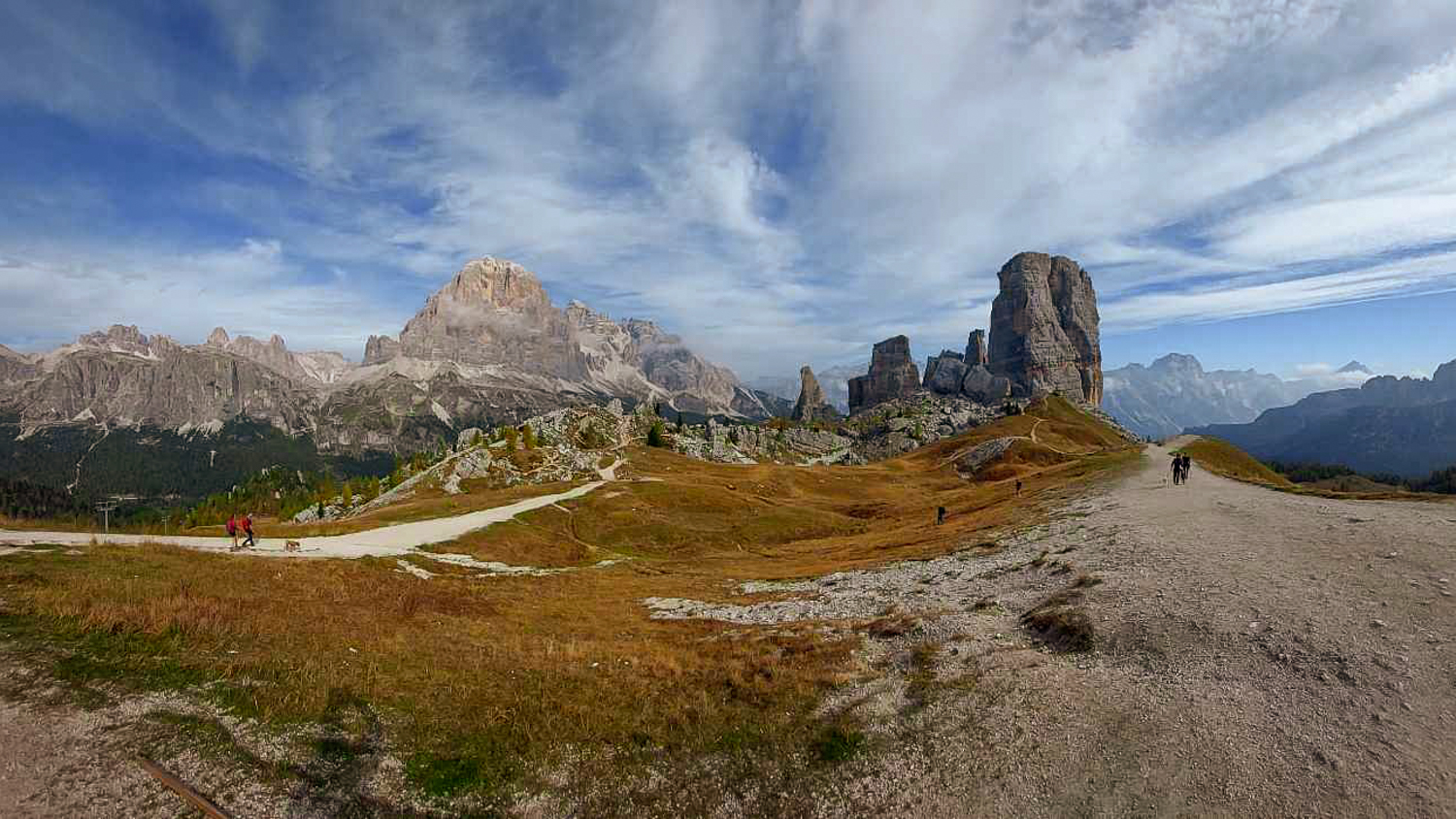
Cortina d’Ampezzo
Often simply referred to as Cortina, Cortina d’Ampezzo is one of the most famous and beautiful mountain resorts in Italy and Europe at large. Some of the most picturesque peaks in the Dolomites surround it, which is in northeastern Italy’s Veneto region. The town sits approximately 1,200 meters above sea level, making it a favorite destination in both winter and summer.
Historically, Cortina d’Ampezzo has a rich past that dates back to prehistoric times. However, it truly flourished in the 1950s and 1960s, notably after hosting the 1956 Winter Olympics. This event put the town on the map as a global hub for winter sports. Luxurious alpine villas, chic boutique shops, art galleries, and cafes underline its reputation as a hotspot for the wealthy and famous.
In winter, Cortina d’Ampezzo is a haven for skiing and snowboarding, with extensive slopes suitable for all experience levels. It’s part of the Dolomiti Superski area, providing access to hundreds of kilometers of slopes with a single pass. Aside from skiing and snowboarding, other winter activities such as ice skating, sledding, and cross-country skiing are available.
In the summer, Cortina transforms into a perfect hub for hiking, cycling, climbing, and paragliding. Hiking trails of all difficulty levels meander through the stunning mountain landscape, a part of UNESCO’s world heritage. Mountain biking is also a popular activity, with numerous trails weaving through pristine nature.
Culturally, Cortina d’Ampezzo hosts events throughout the year, including music festivals, cultural events, and sports competitions. Traditional Italian hospitality is evident in its numerous local eateries, offering exquisite local food and wine.
All these factors rank Cortina d’Ampezzo among Italy’s most desired tourist destinations, drawing visitors seeking a mix of adventure, relaxation, and culture.
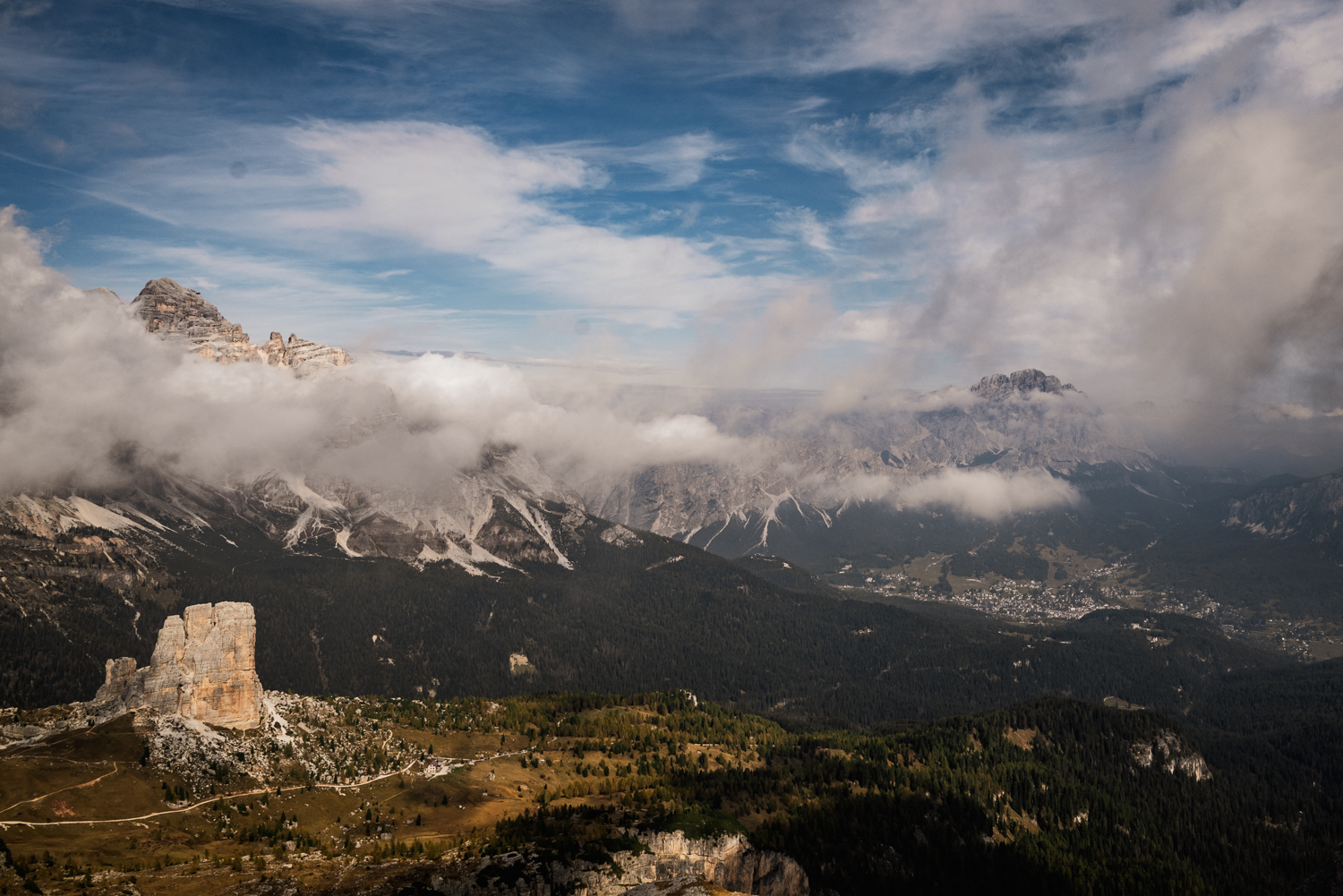
Accommodations in Cortina
Accommodations in Cortina d’Ampezzo offer a magnificent insight into alpine luxury and comfort. However, it’s important to note that prices at this popular resort often lean towards the higher end, especially during the main skiing season and summer months. In and around Cortina, you’ll find a wide range of lodging options, from traditional mountain huts and private apartments to luxurious five-star hotels boasting everything from spa centers to gourmet restaurants. Despite the high prices that reflect the prestigious nature of the destination, there are also more budget-friendly choices, such as smaller guesthouses and B&Bs that maintain local charm and warm hospitality. For those looking for an extended stay, renting an apartment or hut might be more cost-effective, especially if you plan on splitting costs.
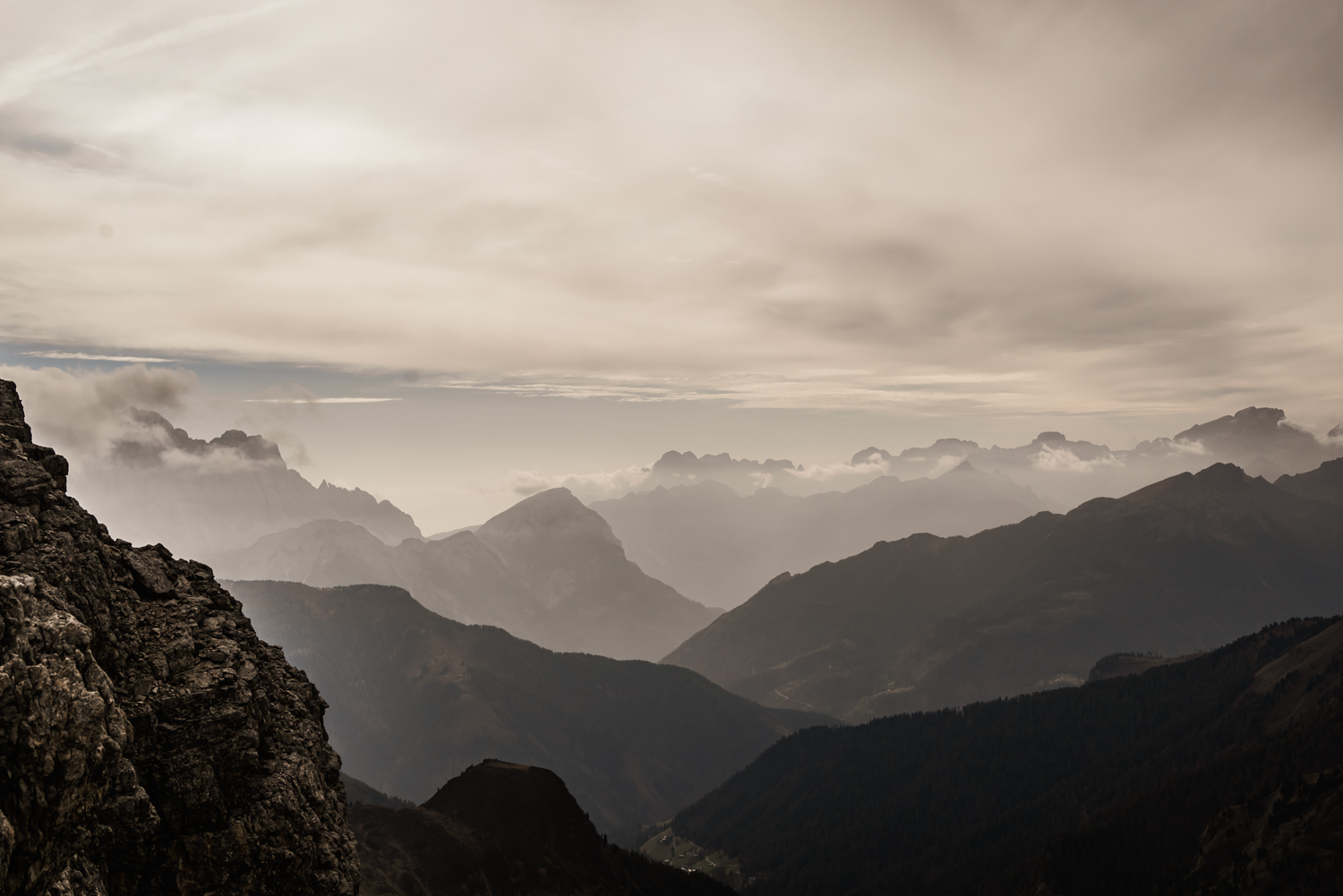
The Endless Allure of the Dolomites
And so, our photographic journey through the enchanting landscape of the Dolomites draws to a close. But let’s remember, every snap of our camera is not just a picture. It’s a moment captured in time, a fragment of the breathtaking beauty that this unique part of the world offers every season, every day, and every hour.
You may return home with a slightly heavier backpack, filled not just with gear but also memories and tales. Each photo will narrate a story of towering peaks, delicate morning flowers, shadows creeping over canyon walls, or stars playing atop silver mountain tips at night.
And as you share your photos, you’re sharing more than just images. You’re sharing a sense of freedom—the feeling of insignificance—in the embrace of the mountains. There is a touch of wilderness and perhaps a hint of homesickness that arises when leaving the Dolomites. Because, dear photographer friends, these mountains are not just backdrops for our photos. They are silent participants in our most adventurous tales, challenges to our lenses, and, most importantly, a testament that the world is still a wondrous place filled with unexplored corners.
So, whether you’re a professional, an enthusiast, or somewhere in between, remember: The Dolomites are perfect for any photographer aiming to capture nature’s magic. Take your time, be patient, and let your camera guide you through this incredible adventure. Who knows, one day you might return, for, as they say, once you experience the Dolomites, you’ll always yearn for them. Happy shooting 📸!
